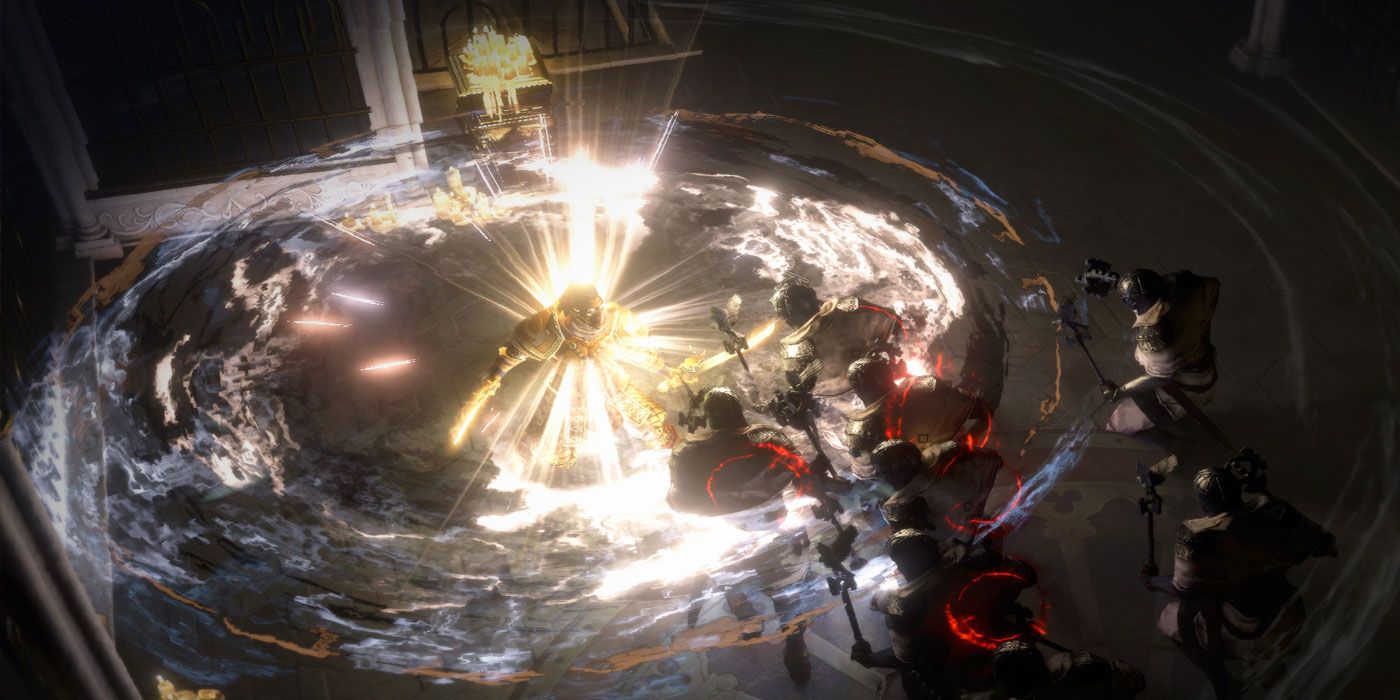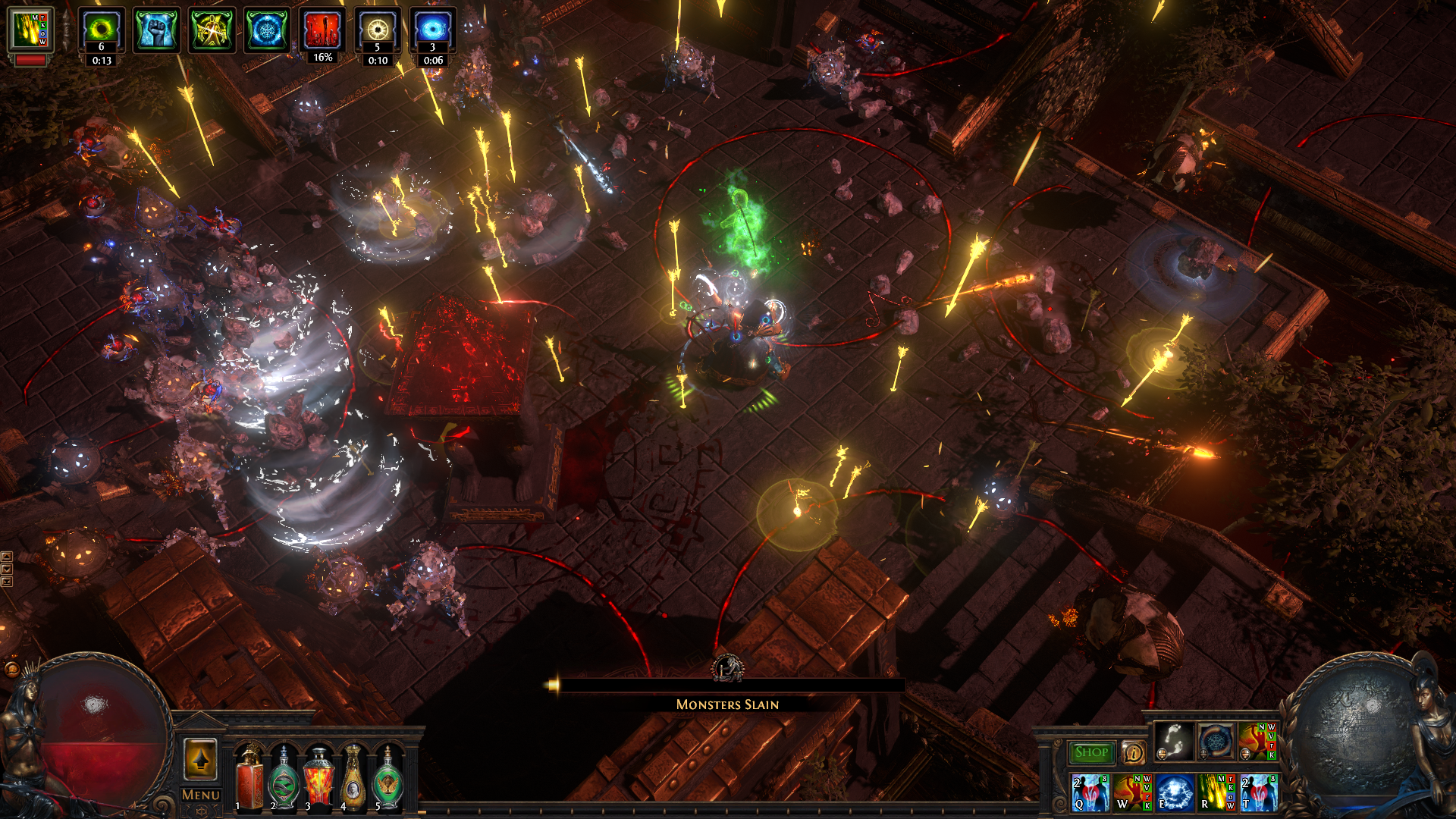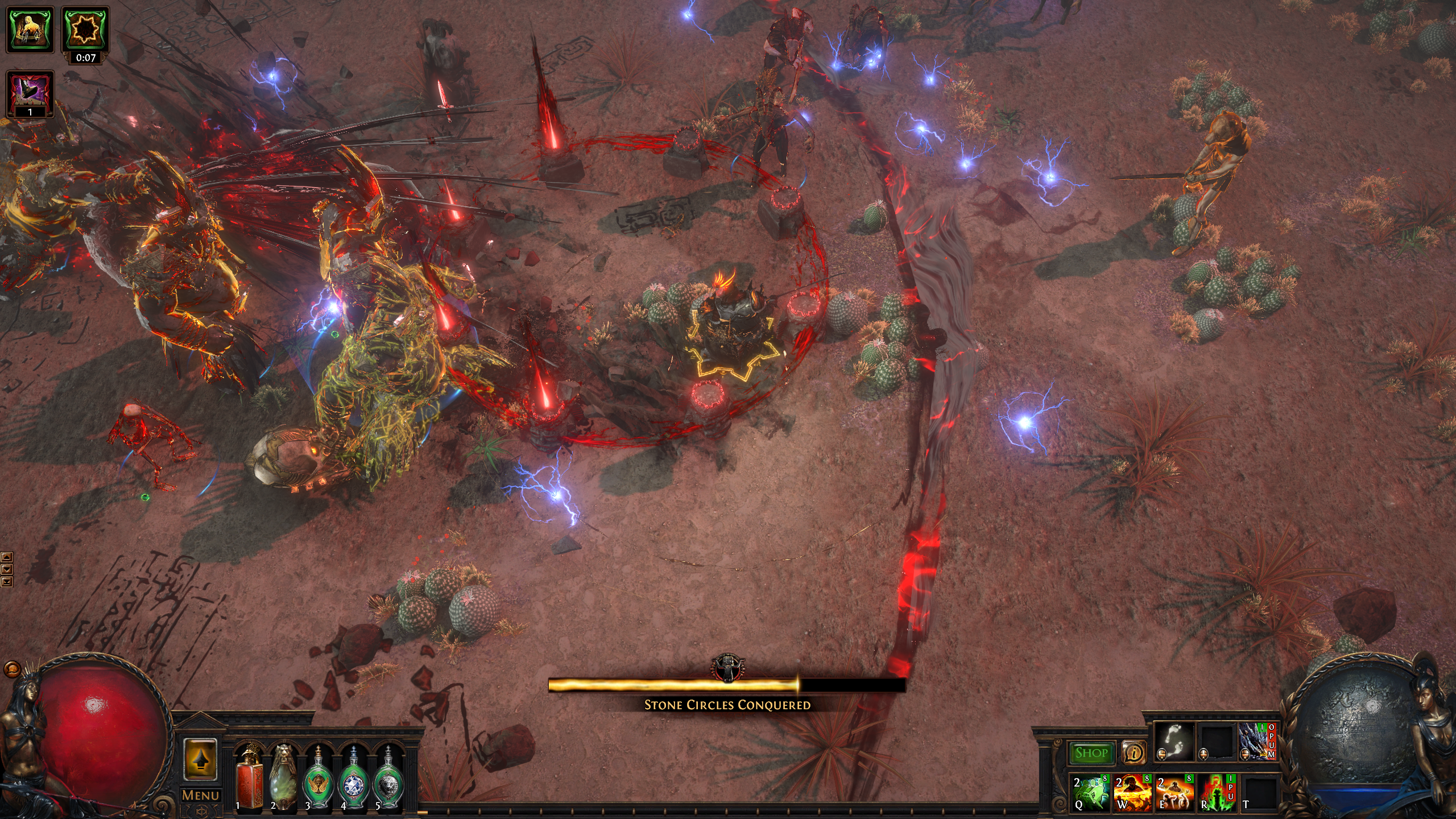
Although Path of Exile follows a tried-and-true gameplay formula in many ways, its continuous update stream, as well as its highly customizable nature, can make it hard to get started. This new content has surely attracted many beginners to the world of Wraeclast who might be looking for a bit of guidance before setting off on their quest.
Path of Exile launched in October 2013, providing a unique spin on classic Diablo-style gameplay via its custom progression system without charging anything for the experience. The action RPG prompts the player to choose a class like one might expect, but that class mostly only determines the character's starting position on a sprawling web of interconnected nodes, which increases the character's stats. Skills, rather than being learned through leveling, are instead found in gems that attach to equipment, which are gated by stat requirements.

While the game theoretically supports any number of builds for any class, each of the seven classes is pointed towards a certain playstyle and stat distribution from the start. The three more basic classes — Marauder, Ranger and Witch — each focus on one stat. Marauders do best with big Strength scores, Rangers want high Dexterity and Witches need lots of Intelligence. The four other classes are hybrids: Duelists use Strength and Dexterity, Templars focus on Strength and Intelligence, Shadows want Dexterity and Intelligence, and the Ascendant, who players won’t have from the start, can specialize in any stat they wish.
As might be expected, Strength builds are mainly intended to fight in melee, with good damage and high resiliency, while Dexterity builds will often focus on ranged attacks and evasion, and Intelligence builds will have high mana and powerful magical skills. Builds certainly have a lot of room for creativity in the hands of a player with a greater grasp on the game, but at the start, picking the stat (or stats) a class is built to excel in and making a straightforward build around will more than suffice.

While the skills a character can use will be determined by their stats, they don’t gain those skills by leveling up. Rather, they’re dropped as gems, which can be inserted into equipment to gain usable abilities as long as they’re equipped. Pieces of equipment will have sockets of various colors, and a gem of an appropriate color can be placed in a matching socket as long as the character meets the stat requirements.
Using skills regularly levels them up, but that’s not the only way to strengthen them. Certain pieces of equipment will have some sockets linked together. In such a case, a Support Gem can be placed in a linked socket to modify the skill it’s attached to, either strengthening it or altering its properties in useful ways. Every class will benefit from a constant supply of upgraded gear, which includes ensuring the slots found in the new gear support that character's chosen skills.

A character’s flasks, located at the bottom left corner of the screen, are their consumable items, restoring life, magic or both. Unlike potions in many games, however, flasks aren’t used up completely when activated. Rather, they remain in the character's inventory and can be recharged by going back to town or killing enemies. A player can have up to five flasks equipped, and while at the start of the game they will restore life or mana pools, flasks with other beneficial effects will soon begin to appear.
Flasks wind up being a piece of gear just like any other and require fairly constant upgrading to keep up with the ever-stronger enemies. There even exist flasks that, rather than restorative effects, apply special buffs for a limited time. These flasks will be helpful for pushing a build's effectiveness and taking on difficult enemies or bosses, and thus can be considered vital equipment for the later challenges.

Path of Exile can be a fun game to play solo, but if a player needs help or wants a more social experience, Path of Exile supports online multiplayer play like many of its contemporaries. Whether it's assembling a group of friends who all want to play together or just grouping up with strangers, Path of Exile makes playing with others easy and fun.
Whether looking to invite friends or strangers to play, forming a party is as easy as pressing the “S” key by default to bring up the social menu and navigate to the appropriate tab. Even higher-leveled players can be automatically scaled to a lower level to help beginners — but be warned, adding players also increases the strength of the monsters encountered. Such a drawback is well worth the rewards, as the quality of dropped items increases in kind.
With the game being free-to-play and so much new content on the horizon, there’s no better time to start playing Path of Exile. It may look daunting, the world of Wraeclast swiftly turns even the most unsure beginner into an expert at fighting hordes of monsters.
0 Comments